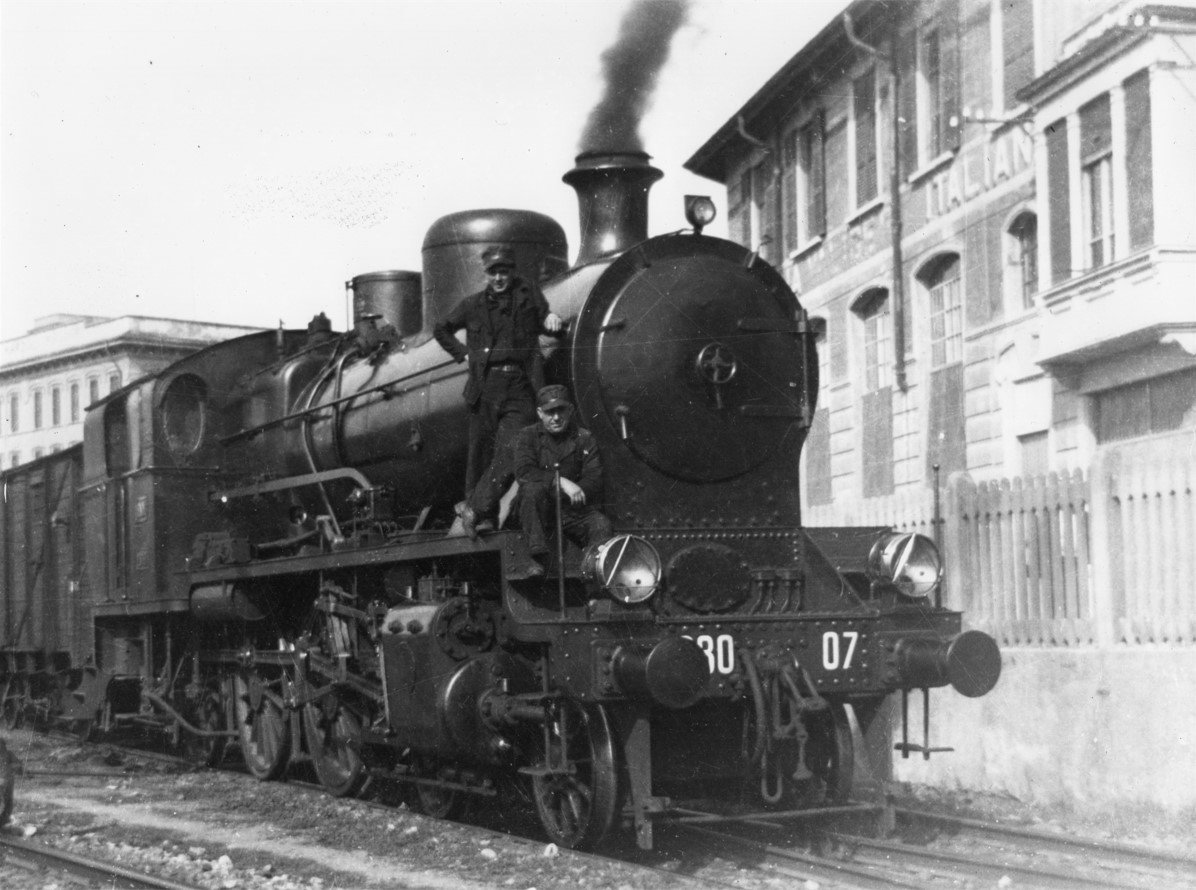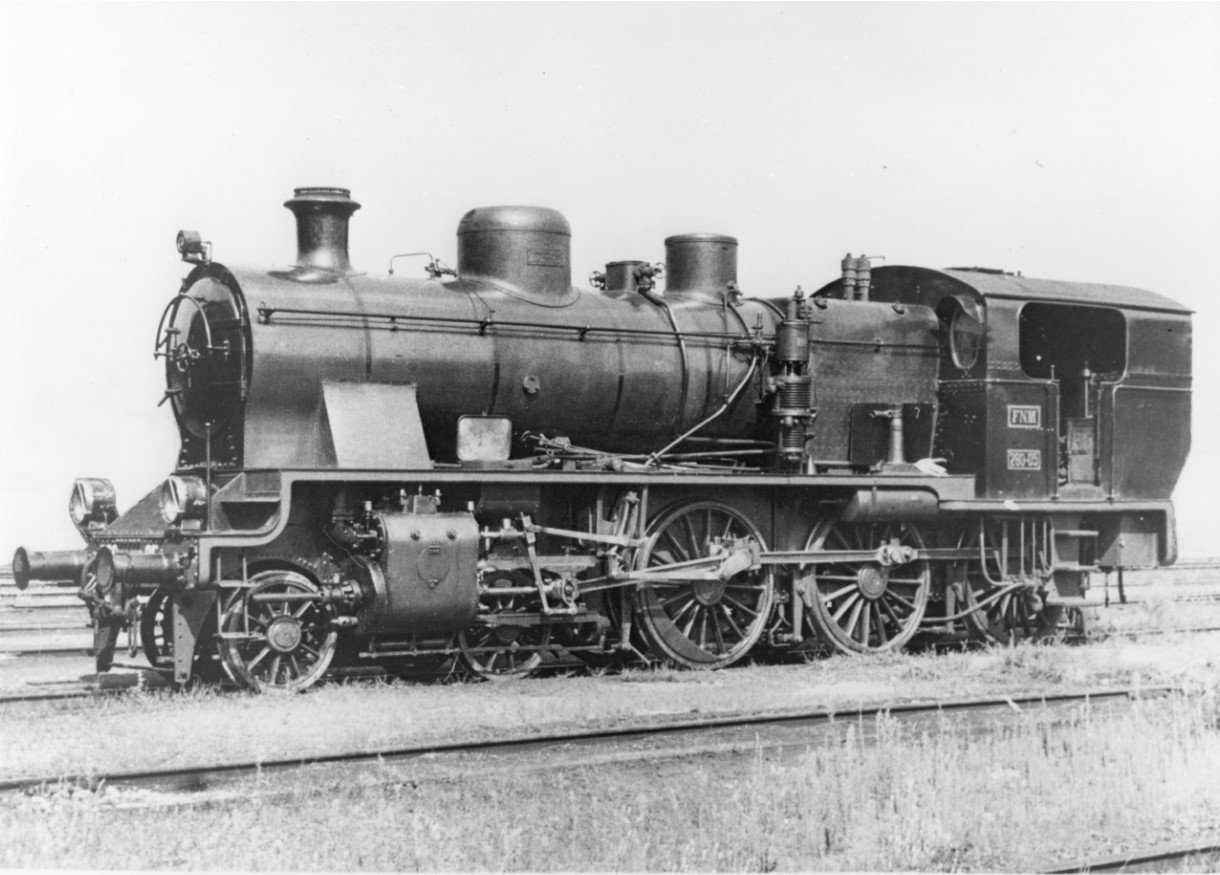In the early 1900s, the increase in passenger traffic made it necessary for the FNM to address the need for new, faster and more powerful steam locomotives. The German company Henschel & Sohn of Kassel were therefore commissioned to develop a locomotive for the new 280 class. The first three tank engines numbered 281-283 were delivered in 1909 and successfully fulfilled the requirements of the service. The 280 could pull much longer and heavier trains than the other FNM locomotives at a speed of 80 km/h. In light of this successful outcome, Ferrovie Nord requested 3 additional identical locomotives from the German firm, which were delivered in 1911. Between 1923 and 1927 the class was expanded with a further 14 units built by BREDA, OM and CEMSA. The main characteristics of the 20 class 280 tank engine locomotives were the superheated steam boiler, 3-coupled axle engine (UIC wheel arrangement 2’Ch2t), rear two-axle bogie, twin cylinder engine, Walschaerts valve gear, and cylindrical slide valve. Diameter of the driving wheels 1,620 mm.
Class 280

- Progettazione: 1907
- Costruzione: 1907-1927
- Esercizio: 1907-1962
- Massa in servizio: t. 66.3
- Rodiggio UIC: 2’Ch2t
- Ruote motrici Ø: 1.620 mm
- Costruttore: Henschel/OM/BREDA/CEMSA
- Lunghezza fuori tutto: 12.038/11.938 mm
- Altezza al fumaiolo: 4.160 mm
- Corsa stantuffi: 600 mm
- Diametro cilindri: 500 mm
- Potenza a 70 Km/h: 717 kW
- Passo totale: 8.300 mm
- Velocita massima: 80 km/h
- Pressione esercizio: 12 Kg/cm²
- Superficie risc. tot.: 159,40 m²
- Capacità casse acqua: 6,5 m³
- Alimentazione: 1,5 m³ carbone
- Design date: 1907
- Build date: 1907-1927
- Service date: 1907-1962
- Service mass: 66,3 tons
- UIC wheel arrangement: 2’Ch2t
- Diameter of the driving wheels: 1,620 mm
- Builder: Henschel/OM/BREDA/CEMSA
- Overall length: 12,038/11,938 mm
- Funnel height: 4,160 mm
- Piston stroke: 600 mm
- Cylinder diameter: 500 mm
- Power at 70 km/h:: 717 kW
- Overall wheelbase: 8,300 mm
- Maximum speed: 80 km/h
- Operating pressure: 12 Kg/cm²
- Overall heating area: 159.40 m²
- Water tank capacity: 6.5 m³
- Fuel: 1,5 m³ coal
The driving cab of the 280, much larger and more spacious than previous FNM steam locomotives, was equipped with a coal bunker of 1.5 m³ at the rear, due to the higher consumption of the boiler. Due to space constraints, the water tanks were not positioned at the sides of the boiler but were between the crossbars of the chassis. The cab contains all the instruments for controlling the steam pressure and water level in the boiler, the brake compressed air and steam pressure gauges, and the injector valves and levers for supplying the boiler with water. It also contained devices for lubricating the locomotive’s many mechanisms. The throttle lever, and the reverser wheel. As it was a bidirectional locomotive, it could also travel in reverse with the funnel facing backward from the direction of travel, although the usual practice on Ferrovie Nord Milano lines was to turn steam locomotives on the turntable before each journey.

